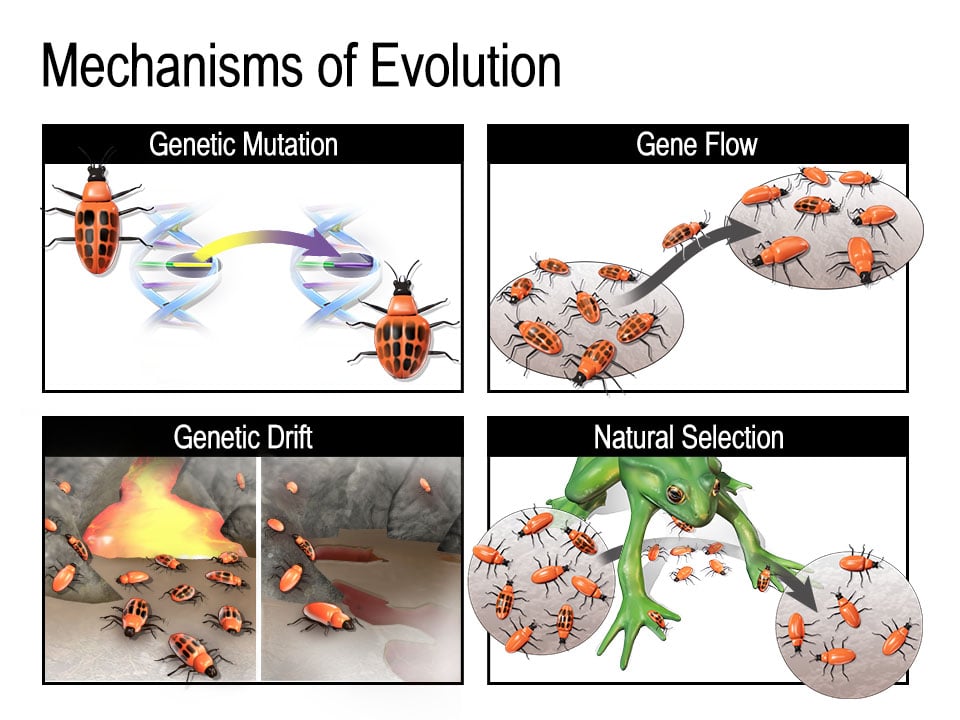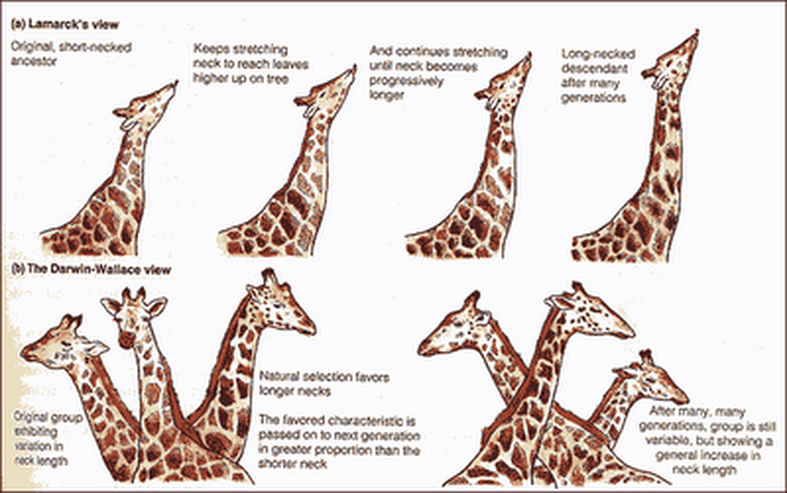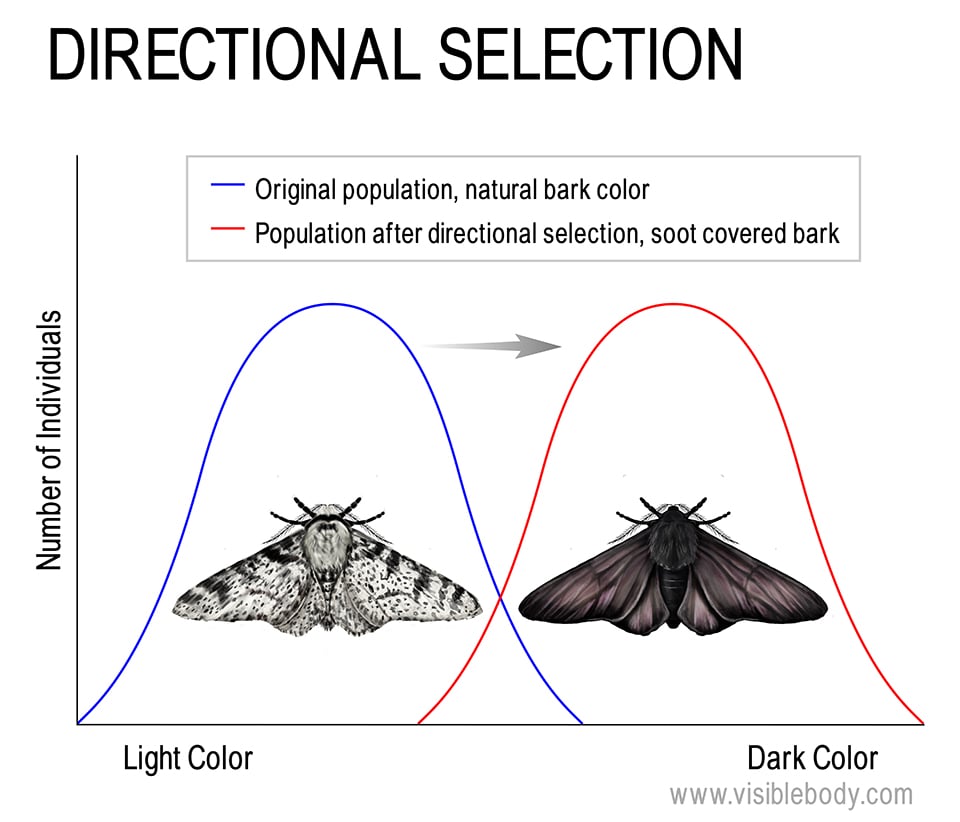Natural Evolution Examples Charles Darwin and Natural Selection In the mid nineteenth century two naturalists Charles Darwin and Alfred Russel Wallace independently conceived and described the actual mechanism for evolution Importantly each naturalist spent time exploring the natural world on expeditions to the tropics From 1831 to 1836 Darwin traveled around the
Evolution theory in biology postulating that the various types of living things on Earth have their origin in other preexisting types and that the distinguishable differences are due to modifications in successive generations The theory of evolution is one of the fundamental keystones of modern biological theory Natural selection is one of the ways to account for the millions of species that have lived on Earth Charles Darwin 1809 1882 and Alfred Russel Wallace 1823 1913 are jointly credited with coming up with the theory of evolution by natural selection having co published on it in 1858 Darwin has generally overshadowed Wallace since the
Natural Evolution Examples
 Natural Evolution Examples
Natural Evolution Examples
https://www.visiblebody.com/hubfs/learn/bio/assets/evolution/mechanisms-of-evolution.jpg
1 A 1 Natural selection is a major mechanism of evolution 5 3 The student can evaluate the evidence provided by data sets in relation to a particular scientific question 1 9 The student is able to evaluate evidence provided by data from many scientific disciplines that support biological evolution
Pre-crafted templates offer a time-saving option for creating a diverse variety of files and files. These pre-designed formats and layouts can be used for various individual and professional tasks, consisting of resumes, invitations, leaflets, newsletters, reports, discussions, and more, improving the content production procedure.
Natural Evolution Examples

What Is Microevolution

Evolution Theories Notes Biology Mrs McComas

Darwin Ispinozlar Turkcewiki

Mechanisms Of Evolution

EC Honors Biology Darwin s Theory Of Evolution By Natural Selection

Can Natural Selection Make Anything

https://www.khanacademy.org/science/biology/her/evolution-and-natural-selection/a/lines-of-evidence-for-evolution
Key points Evidence for evolution comes from many different areas of biology Anatomy Species may share similar physical features because the feature was present in a common ancestor homologous structures Molecular biology DNA and the genetic code reflect the shared ancestry of life DNA comparisons can show how related species are

https://www.khanacademy.org/science/ap-biology/natural-selection/natural-selection-ap/a/darwin-evolution-natural-selection
Key points Charles Darwin was a British naturalist who proposed the theory of biological evolution by natural selection Darwin defined evolution as descent with modification the idea that species change over time give rise to new species and share a common ancestor The mechanism that Darwin proposed for evolution is natural selection

https://www.khanacademy.org/science/high-school-biology/hs-evolution/hs-evolution-and-natural-selection/a/hs-evolution-and-natural-selection-review
Natural selection is a mechanism or cause of evolution Adaptations are physical or behavioral traits that make an organism better suited to its environment Heritable variation comes from random mutations Random mutations are the initial cause of new heritable traits For example a rabbit can t choose to have a different fur color

https://www.khanacademy.org/science/ap-biology/natural-selection/natural-selection-ap/v/introduction-to-evolution-and-natural-selection
Natural selection is a mechanism of evolution and explains how species adapt to their environment over time through variations in traits Examples include the peppered moth adapting to industrial pollution yearly flu virus changes and antibiotic resistant bacteria Understanding natural selection is essential for studying living systems

https://www.khanacademy.org/science/ap-biology/natural-selection/artificial-selection/a/evolution-natural-selection-and-human-selection
Gene flow Of these 4 mechanisms we will talk about natural selection Natural selection one of the mechanisms of evolution Natural selection is a process that favors heritable traits that increase the survival chances of an organism allowing the organism to reproduce more An example of natural selection at work antibiotic resistance
Learning Objectives Define and recognize fitness adaptation and evolution by natural selection Explain predictions of and evidence for evolution by natural selection Identify explain and recognize the consequences of evolution by natural selection in terms of fitness adaptation average phenotype and genetic diversity Examples of Evolving Species Evolution is the interaction between genetic changes and natural selection also known as survival of the fittest Charles Darwin famously studied various species to determine how environmental adaptations allowed them to survive
This is an example of natural selection acting upon different populations producing micro evolution on a continental scale And it is one that humans have been around to observe firsthand